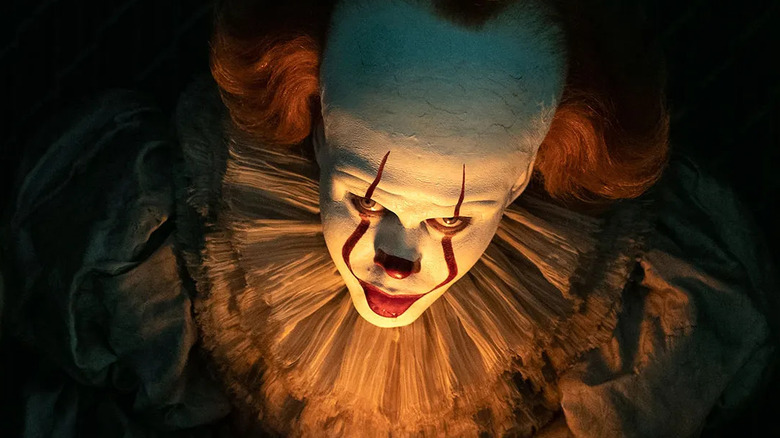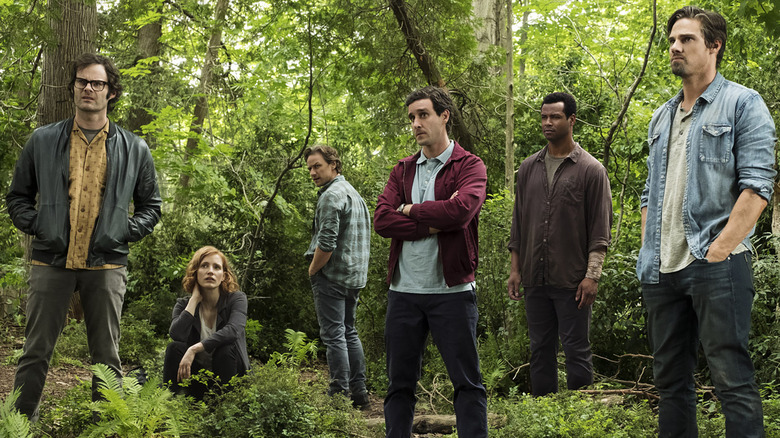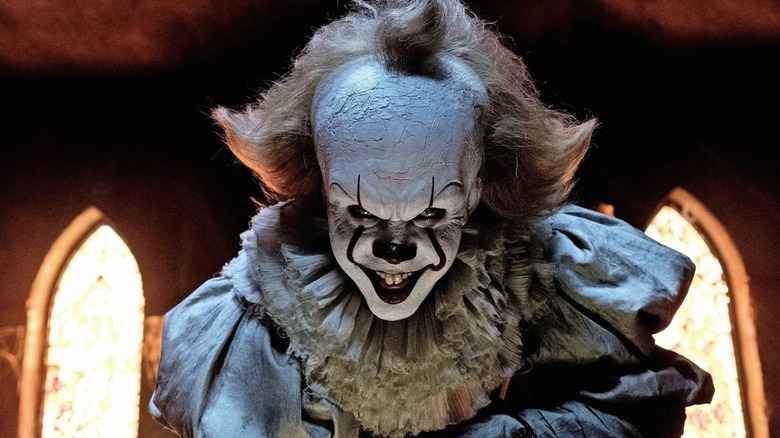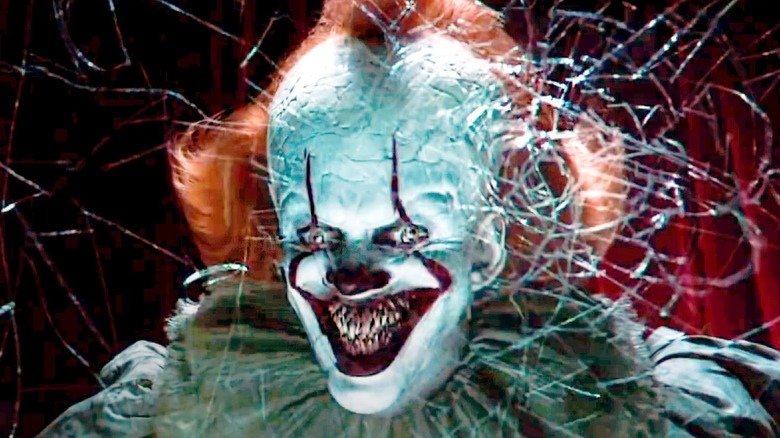It Chapter 3: How Pennywise Could Be Resurrected In A Possible Sequel
When the 2017 remake of Stephen King's "It" was announced, fans were skeptical. After all, Tim Curry's Pennywise the Dancing Clown is a horror legend, and many people felt that messing with the original was probably not the best idea. However, 2017's "It" became one of the most talked-about horror movies ever. With a fresh update to the source material, the remake didn't just rehash what was already created but made something exciting, terrifying, and new.
"It: Chapter Two" was an inevitable sequel, where the kids from the original film would have to return to Derry to finish Pennywise (Bill Skarsgård) off. While many questioned the methods used to kill the iconic monster, the second film's ending suggested that Pennywise finally met his match and died at the hands of the Losers Club. He might have taken Eddie Kaspbrak (James Ransone) with him, but the surviving members of the Losers Club ripped Pennywise's heart out and crushed it.
The film emphasizes the blood oath scars from the survivors' hands disappearing, marking an end to the Losers Club's nightmare. This indicates that Pennywise is dead, but many fans still expect an "It: Chapter Three," especially after Bill Skarsgard discussed the potential. Some have theorized that the film will feature a new villain, but there are so many arguments to be made for why Pennywise could still be alive. Just because the Losers Club believes they're free doesn't mean Pennywise is gone.
The Losers Club destroyed Pennywise's heart
Although Pennywise typically takes the form of the terrifying clown that everyone remembers, he's a supernatural shape-shifter from another world that crash-landed on Earth. Pennywise constantly changes forms throughout both films to best match an individual's deepest fear. This ranges from a disease-ridden man to Beverly's abusive father to Georgie (after his disappearance) to a decapitated child. These are just some of the many shapes that It takes to terrify victims.
"It" and "It: Chapter Two" both emphasize that none of these forms are It's true form. The Deadlights, the dancing lights that often appear in the back of It's throat that hypnotizes his prey (like what happened to Beverly at the end of "It") are what the movies focused on, being Pennywise's truest form and the source of It's power.
Assuming, then, that in order to kill It, the Losers Club would need to destroy the Deadlights. The film only showed them destroying It's heart, though. As a species, very little is known about what this entity is or how it works, so assuming that destroying the heart is enough to kill it is a huge oversight.
Not to mention, this isn't the first time the Losers have beaten It. At the end of the first film, they managed to beat It back so badly, it crawled back into its pit, where it took 27 years to regenerate itself. There aren't really any rules set in place to say that It isn't doing the exact same thing now. Since It is capable of completely rebuilding its body, it's hard to make an argument that it's impossible for It to come back for a third film in the series.
The blood oath isn't as secure as it seems
In "It," the Losers Club cut their palms and join hands, making a vow that they'll be there to kill the monster whenever it resurfaces. Determined to end the cycle with them, these kids swear that they won't forget what happened to them. At the end of "It: Chapter Two," after they've defeated It, the scars from their blood oath disappear. This indicates that they've fulfilled their oath.
At a glance, this seems final, but what if their belief was enough to satisfy the oath? It doesn't have to be dead in order for the Losers to believe it. Canon shows time and time again that Pennywise can manipulate reality by bringing people's worst nightmares to life. What if It also used its abilities to fake its death? Pennywise can make its victims believe anything it wants. That makes It so terrifying, unpredictable, and challenging to beat.
It only emerges once every 27 years. By the time the Losers square off against Pennywise again in "It: Chapter Two," most of them are pushing 40, if not older. If It simply waits another 27 years, this obnoxious group will be pushing closer to 75, meaning they likely won't be able to fight the powerful entity again.
Since they've proven to be so cumbersome, Pennywise is better off waiting them out. It can live for eons, while the Losers still have a typical human lifespan. Tricking them into believing It's dead is an effective way to get them out of the picture. Believing that they succeeded in killing It, they'll have no reason to search for It again the next time Pennywise crawls out of the sewers. The time after that, the Losers will likely all be dead from old age. This could necessitate the introduction of new characters for a hypothetical "It: Chapter Three."
Stephen King references Pennywise in many of his works
Stephen King is a master at weaving intricate universes that thread individual stories together into a much larger picture. Almost all of his works are assumed to take place in the same universe, meaning that even when Pennywise is never mentioned, the reality that It exists somewhere in that world is very high.
King has taken it further by outright mentioning or nodding to Pennywise in some of his other stories. There have been multiple instances where King has implied that the Losers Club didn't actually succeed in killing It. In his novel "Dreamcatcher," there's a statue covered in graffiti that hints at Pennywise's return. Either It put the graffiti there itself after convincing the Losers Club that he was dead, or something in association with It left the graffiti as a warning.
Pennywise is also heavily eluded to in "The Dark Towers" series as an entity lurking in the background that never makes a fronting appearance but still causes problems for the protagonist. This includes laying eggs which are all destroyed except for one, which hatches and becomes Dandelo. Dandelo is capable of the same abilities that It possessed, making it just as dangerous of a threat as its mother. Dandelo is thought to hatch after It has been destroyed, which could indicate that preparing offspring is a way to ensure that there will always be at least one of them.



